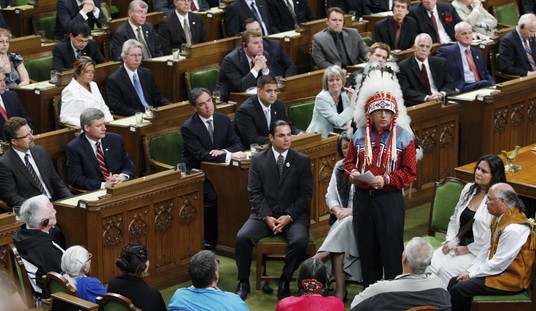I started following the Scott Brown campaign on December 9, the day after the primary. I covered the race closely, some would say obsessively, including over 80 blog posts. I also volunteered for two days at Brown headquarters and made dozens of phone calls to voters.
On December 9, almost no one gave Brown any realistic chance to win. But beneath the seemingly placid waters was a strong political undercurrent, which, combined with Brown’s effective campaign and Coakley’s missteps, created the most stunning political upset in recent history. Here’s how Brown won.
Toxic Health Care
The political atmosphere on December 9 already was toxic for Democrats. Throughout the fall, polls consistently found declining support for Democratic health care proposals. This discontent was further agitated in November by the $300 million “Louisiana Purchase” payoff to Sen. Mary Landrieu, in exchange for her support.
Closed-door Senate negotiations in December, and Ben Nelson’s “Cornhusker Kickback” for Nebraska, created grassroots momentum against the health care legislation.
A poll taken by the National Republican Senatorial Committee in mid-December showed that Brown was down by only 13 points, reflecting this underlying public discontent. The poll was kept quite so as not to alert anyone to the relatively close race, and everyone proceeded throughout December believing that Coakley would coast to an easy victory.
Social Media and Coakley’s Vacation
Coakley pretty much took the month of December off from the general election campaign trail, including vacation during Christmas week. While Coakley was vacationing, Brown was building his campaign by nonstop retail campaigning and an effective social media strategy through his Brown Brigade website.
During December, a small number of independent bloggers and twitterers also were generating buzz on the internet for Brown. By the end of December 2009, Brown was winning the online war, and by early January, Brown dominated Facebook, Twitter, and the blogosphere. By the time of the election, social media was a driving force in Brown’s fundraising and generating enthusiasm for his campaign.
Brown also used December to start building a fundraising base. Coakley, perhaps because she assumed an easy victory, had tepid fundraising. In order to create the appearance of strong fundraising, Coakley was reduced to issuing misleading press releases which conflated her primary campaign fundraising with her general election fundraising.
Brown Capitalizes in January
When Coakley returned from vacation in January, Brown had enormous momentum. And when Brown claimed the mantel of John F. Kennedy on December 29 with the now historic campaign ad, Coakley was on defense.
What the Brown campaign knew from NRSC polling, the country learned when Rasmussen released a poll on Tuesday, January 5, showing Coakley up 9% with likely voters, but up only 2% with definite voters.
I visited Brown headquarters the following Saturday, and the effects of the Rasmussen poll were clear. The campaign headquarters saw a tidal wave of enthusiasm. Here’s an excerpt from my report:
The best description of the experience was that it was like one of those movies or commercials where everything is quiet until the actor opens a door, and then there is a blast of noise and light.
From the moment I arrived until I left about 5 hours later, the atmosphere was electric. I had not expected the frenzy of phones ringing, people walking in the door to write checks, dozens of people making calls to voters, and generally ebullient mood. …
If what I saw accurately reflects what is happening statewide, it is going to be very, very interesting on January 19.
The Rasmussen poll was at once a turning point in terms of harnessing support for Brown, but at the same time, a wake-up call for the Coakley campaign.
Coakley’s Missteps
Much has been made of Coakley’s gaffes, and there were plenty. From the snide comment about shaking hands in the cold outside Fenway Park, to the ill-timed lobbyist fundraiser in Washington, D.C., and subsequent scuffle with a reporter, Coakley defined herself as an elitist insider.
Coakley also did herself no favor by refusing to debate Brown one-on-one. By insisting on the participation of independent candidate Joe Kennedy at every debate, Coakley perpetuated her perceived sense of entitlement.
The spat with Curt Schilling not only infuriated Red Sox fans, but also painted Coakley as a petty politician. Do we really expect a senator to put someone down by calling them a Yankees fan? Coakley was running for the Senate, not third-grade lunch monitor.
None of these missteps, however, were sufficient for Brown’s victory. The missteps were a reaction to the late realization that Brown had the momentum and that Coakley was ill-equipped, both temperamentally and in campaign organization, to mount a counter-offensive in the last 10 days of the campaign.
The last-minute negative attacks by Coakley epitomized a campaign in disarray. The television ads regarding the “morning-after” pill were transparent scare tactics on an issue not central to the debate. The now-notorious rape mailer was offensive and almost certainly did more harm than good. The related quip that people who did not want to give out the morning-after pill for religious reasons should not work in emergency rooms exhibited a shocking political tone-deafness.
Other Democrats exacerbated these gaffes by floating the idea that they might delay seating Brown should he win in order to pass the health care bill. This possibility infuriated voters and contributed to the view that Coakley merely was part of a political machine. President Obama’s swipe at Brown’s truck perpetuated the view that Brown was a man of the people.
These missteps by Coakley, and Brown’s adroit campaign, were necessary but not sufficient factors in Brown’s victory. Starting with the JFK video, Brown alone successfully established a sense of history in his campaign, much as Barack Obama had in his presidential run.
Brown Seizes History
By the time of the only televised debate on January 11, the country was gripped with interest in the race. Still over a week out from the election, either side could win, and conventional wisdom still made Coakley the clear favorite.
But Brown had his moment in history. David Gergen, echoing a Coakley campaign theme, aggressively pressed Brown over his opposition to Democratic health care proposals, and whether Brown was worthy of the “Kennedy seat.” Brown’s response — that it was not the Kennedy seat or the Democrat’s seat, but “the people’s seat” — was the defining moment of the campaign.
In that moment, Brown created a sense of history and claimed it as his own. The line reminded me of John Kennedy’s inaugural speech, in which Kennedy spoke of the torch being passed to a new generation of Americans. And that new generation was embodied by Scott Brown, not Martha Coakley.
Looking back at this incredible campaign, it is clear that a lot of things had to fall into place for Scott Brown to win. The fact that the pieces came together for Brown was no mere accident.
Brown seized the moment, and thereby changed the course of history.









Join the conversation as a VIP Member